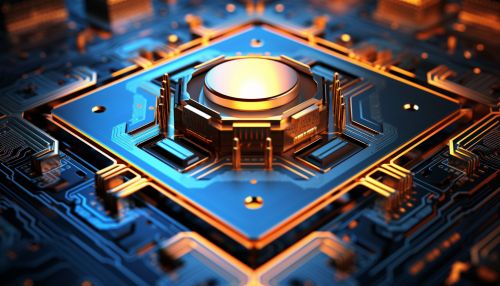Microelectronics
Overview
Microelectronics is a subfield of electronics that deals with the design and manufacture of tiny electronic components for use in an integrated circuit or sometimes for use on their own as a general electronic component. The most common microelectronic components are semiconductor devices, the dimensions of which are measured in micrometers (also known as microns), and even in nanometers.


History
The history of microelectronics is closely tied to the invention of the transistor and the integrated circuit, or 'chip' that they made practical. The transistor was invented in 1947, but it took over a decade of further advances before it could be used in a practical integrated circuit.
Semiconductor Devices
Semiconductor devices are electronic components that exploit the electronic properties of semiconductor materials, primarily silicon, germanium, and gallium arsenide, as well as organic semiconductors. Semiconductor devices have replaced vacuum tubes in most applications. They use electrical conduction in the solid state rather than the gaseous state or thermionic emission in a vacuum.
Integrated Circuits
An integrated circuit (IC) is a set of electronic circuits on one small flat piece (or 'chip') of semiconductor material, normally silicon. The integration of large numbers of tiny transistors into a small chip was a huge improvement over the manual assembly of circuits using discrete electronic components. The IC's mass production capability, reliability, and building-block approach to circuit design ensured the rapid adoption of standardized ICs in place of designs using discrete transistors.
Microelectronic Components
Microelectronic components are made from semiconductor materials. Many components of a typical microelectronic device such as transistors, capacitors, inductors, resistors, diodes, insulators and conductors are included in a microelectronic device.
Microelectronic Design
Microelectronic design is the process through which systems like integrated circuits are created. It includes practices such as architectural definition, IC planning, RTL design, RTL verification, logic synthesis, formal verification, static timing analysis, test generation, design for test, floorplanning, place and route, clock tree synthesis, power optimization, packaging, and verification and validation of the entire system.
Microelectronic Fabrication
Microelectronic fabrication is the process used to create the integrated circuits that are present in everyday electrical and electronic devices. It is a multiple-step sequence of photolithographic and chemical processing steps during which electronic circuits are gradually created on a wafer made of pure semiconducting material.
Future Trends
The future of microelectronics involves the development of new types of devices, new manufacturing processes, and new applications. Microelectronics continues to evolve and adapt to changing demands and technology.
